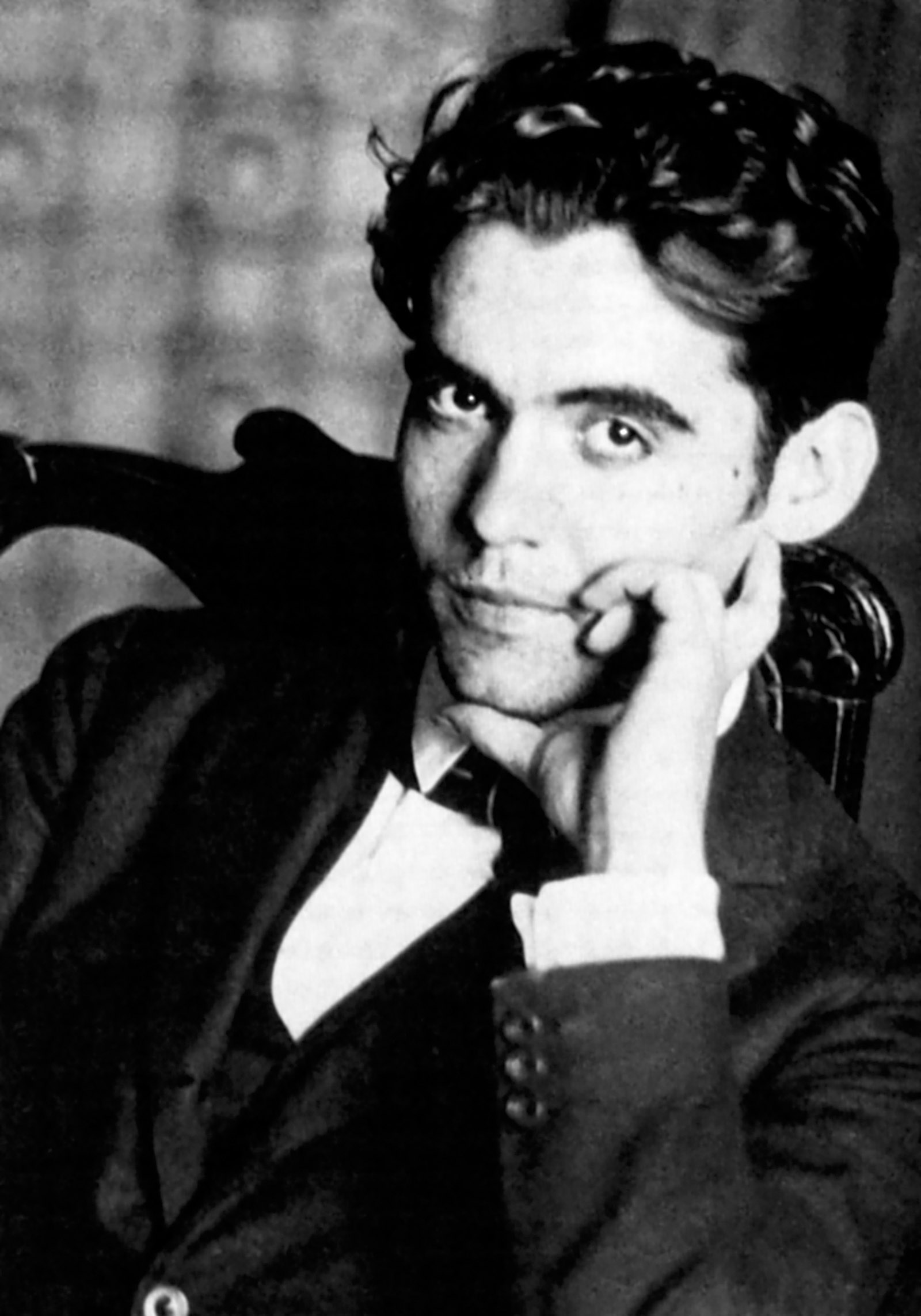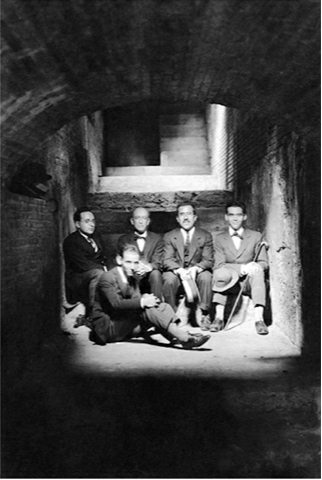

Queer Places:
Huerta de San Vicente, Casa-Museo Federico García Lorca, Calle Virgen Blanca, s/n, 18004 Granada, Spain
Museo Casa Natal Federico García Lorca, Calle Poeta Garcia Lorca, 4, 18340 Fuente Vaqueros, Granada, Spain
Casa Museo de Federico Garcia Lorca, Calle Iglesia, 20, 18250 Valderrubio, Granada, Spain
 Federico
del Sagrado Corazón de Jesús García Lorca,[1]
known as Federico García Lorca[n
1] (5 June 1898 – 19 August 1936) was a Spanish poet, playwright,
and theatre director. Román Gubern writes about the gay group which surrounded
Salvador Dalí and
Federico García
Lorca (among them,
Luis Cernuda, Benjamín Palencia,
Juan Gil-Albert,
Vicente
Aleixandre, Gustavo Durán and
Eduardo Blanco Amor) men who were “compañeros
de [la] constelación cultural de García Lorca”.
Federico
del Sagrado Corazón de Jesús García Lorca,[1]
known as Federico García Lorca[n
1] (5 June 1898 – 19 August 1936) was a Spanish poet, playwright,
and theatre director. Román Gubern writes about the gay group which surrounded
Salvador Dalí and
Federico García
Lorca (among them,
Luis Cernuda, Benjamín Palencia,
Juan Gil-Albert,
Vicente
Aleixandre, Gustavo Durán and
Eduardo Blanco Amor) men who were “compañeros
de [la] constelación cultural de García Lorca”.
García Lorca achieved international recognition as an emblematic member of the Generation of '27, a group consisting of mostly poets who introduced the tenets of European movements (such as symbolism, futurism, and surrealism) into Spanish literature.[2][3] He was executed by Nationalist forces at the beginning of the Spanish Civil War.[4][5][6][7][8] His body has never been found. In 2008, a Spanish judge opened an investigation into Lorca's death. The García Lorca family eventually dropped objections to the excavation of a potential gravesite near Alfacar, but no human remains were found.[9][10]
Serafín Ferro arrived in Madrid in the early 1930s, where he met Federico García Lorca and later Luis Cernuda, with whom he had an affair from 1931 until the spring of 1932. According to the story, a lad with the appearance of a beggar entered El Universal and went to García Lorca, who had just ordered a coffee and a cognac from the waiter: "Mr. García Lorca, why don't you invite me to a nugget? Today I still haven't eaten." Ferro did't have a penny, he wanted a job and he was willing to prostitute himself. Lorca was not attracted to "venal boys" but knew who may be interested. Both went to the house of Vicente Aleixandre, in Velintonia, where he wroye some notes of recommendation, among others to the poet Manuel Altolaguirre and his wife, Concha Méndez, who would hire Ferro as a linotyper in his new printing press, and Luis Cernuda, for whom he saw in Ferro an ideal companion

Underground Granada: Lorca and others (Adolfo Salazar, Manuel de Falla,
Ángel Barrios, Federico García Lorca and, foreground, Francisco García Lorca)
in the cellars of the Alhambra, c.1923
This was how Ferro was introduced to what Lorca called epentismo, the circle of homosexuals of the Generation of 27, with whom the very young A Coruña man related and whose gatherings he frequented, among others that of the Chilean diplomat and writer Carlos Morla Linch, to which the two Andalusian poets, Rafael Martínez Nadal and the Galicians Eduardo Blanco Amor and Ernesto Guerra da Cal, went, and where literature and current affairs were combined with stories of love and jealousy. Xesús Alonso Montero does not doubt that Lorca and Serafín "were lovers, although perhaps occasional", and other testimonies coligen that more than a triangle there could be "a whole love polygon", of which Blanco Amor, confessed homosexual, would be part; Morla and even Guerra da Cal, both married. Seraphim, however, preferred women and, two years later, in 1933, he went to live with Catuxa, a beautiful and almost illiterate lucense, in a gloomy cuchitril near the Plaza de la Cebada.
"Of funny gesture and sweet voice," Lorca described him, and Guerra called him an "intellectualized golfantillo with airs of curly and brown elf." And more or less this is how the portrait taken by Ramón Gaya, who drew it in charcoal and color, and José Moreno Villa, portray it.
In the 1930s in Mexico, physicians, teachers, accountants, journalists and other professionals stood to lose more than their clientele if exposed as homosexual in the press, as such exposure would result in banishment to the Islas Marıas Penal colony. Poet Salvador Novo and playwright Xavier Villaurrutia sought to join other Mexican sexiles in the United States or Europe, including artists José Mojica, Ramón Novarro, Roberto Montenegro, Agustın J. Fink and Enrique Asunsolo, or scientists studying abroad, like Elías Nandino and Raoul Fournier. Seeking ‘to avoid a fate as a cook, waiter, or dishwasher in New York’, Villaurrutia accepted a one-year fellowship at Yale in 1935–36, while a frantic Novo wrote to Federico García Lorca, asking him to procure him lodgings in Madrid.
My published books: